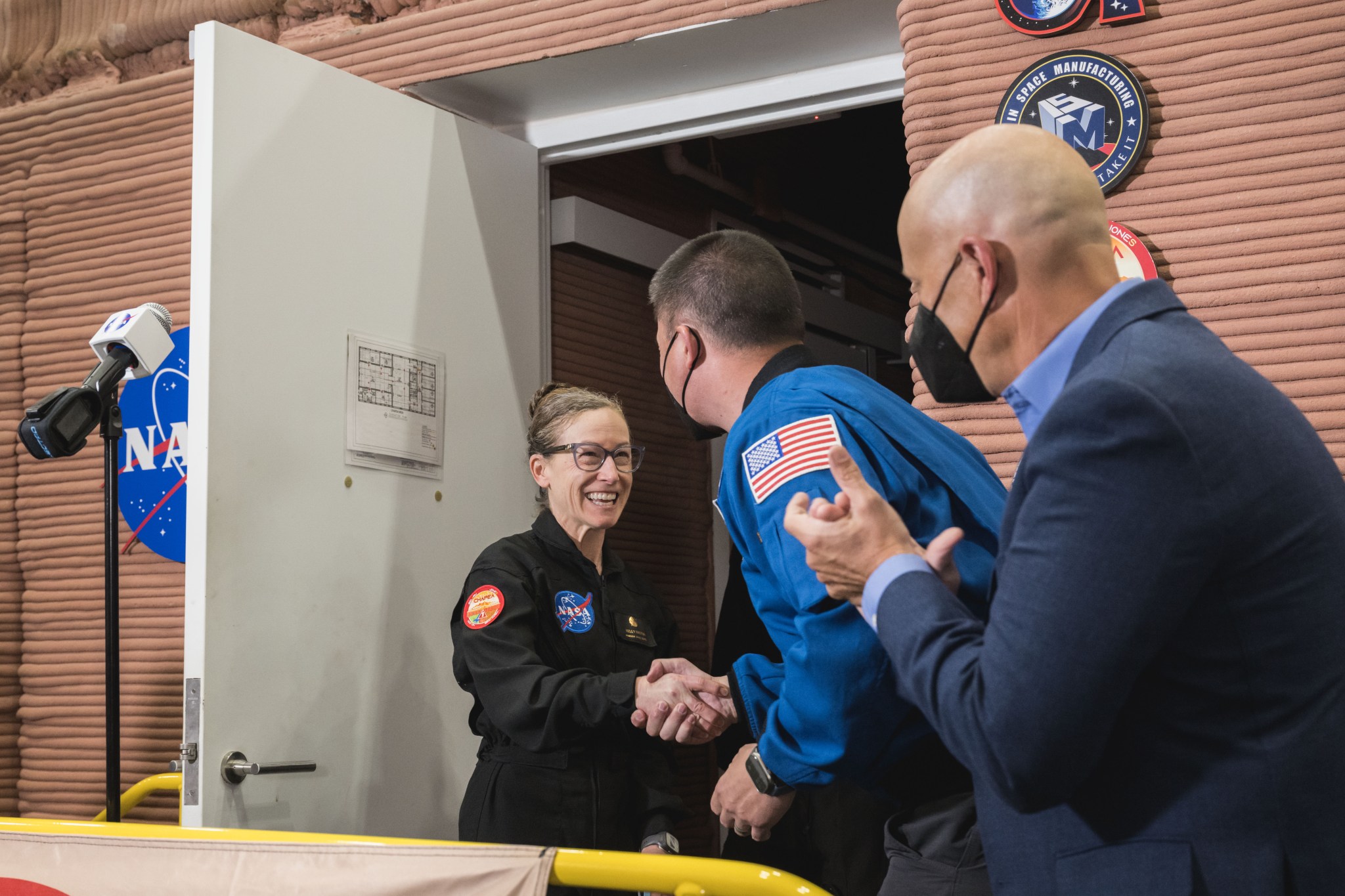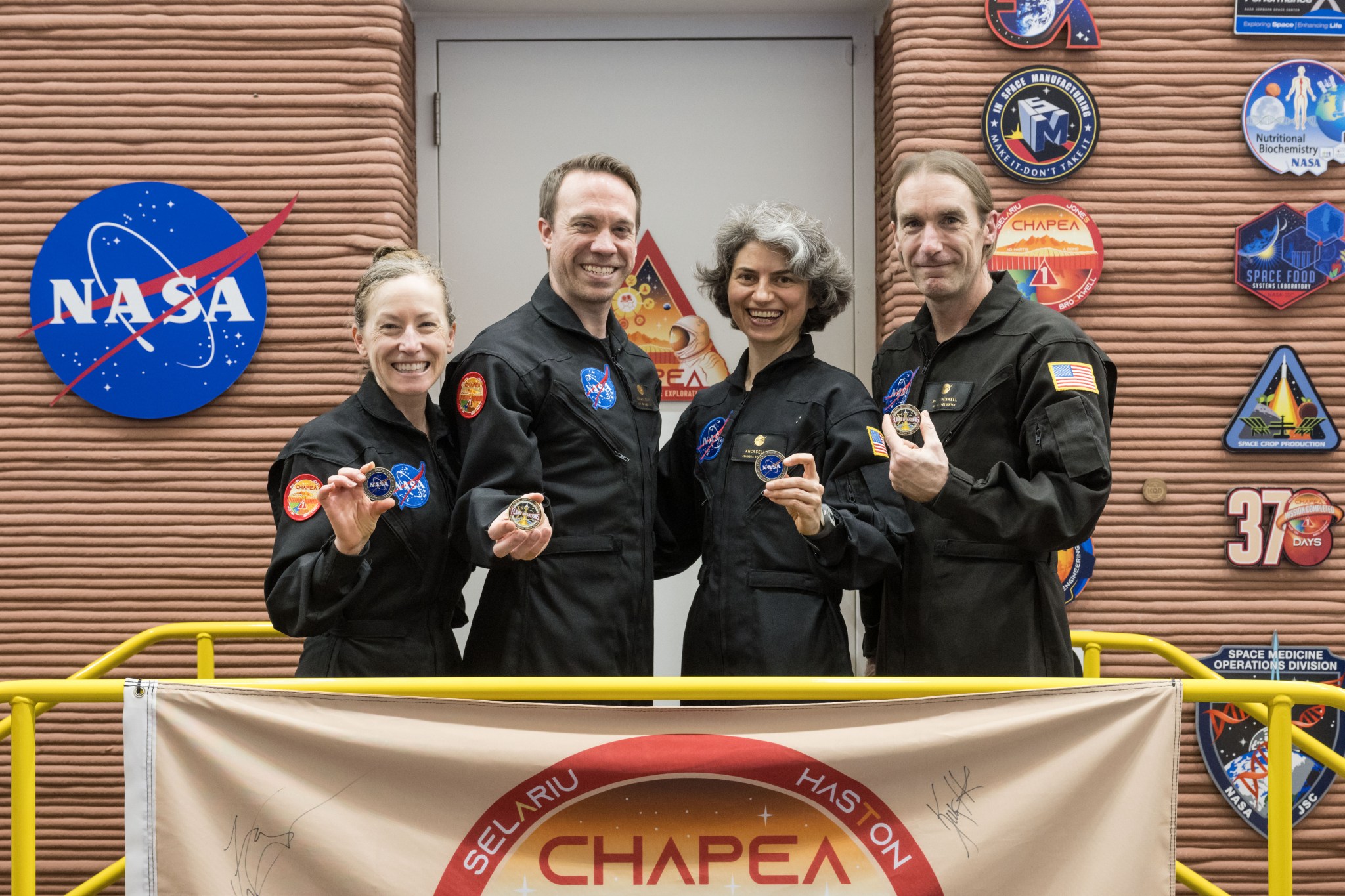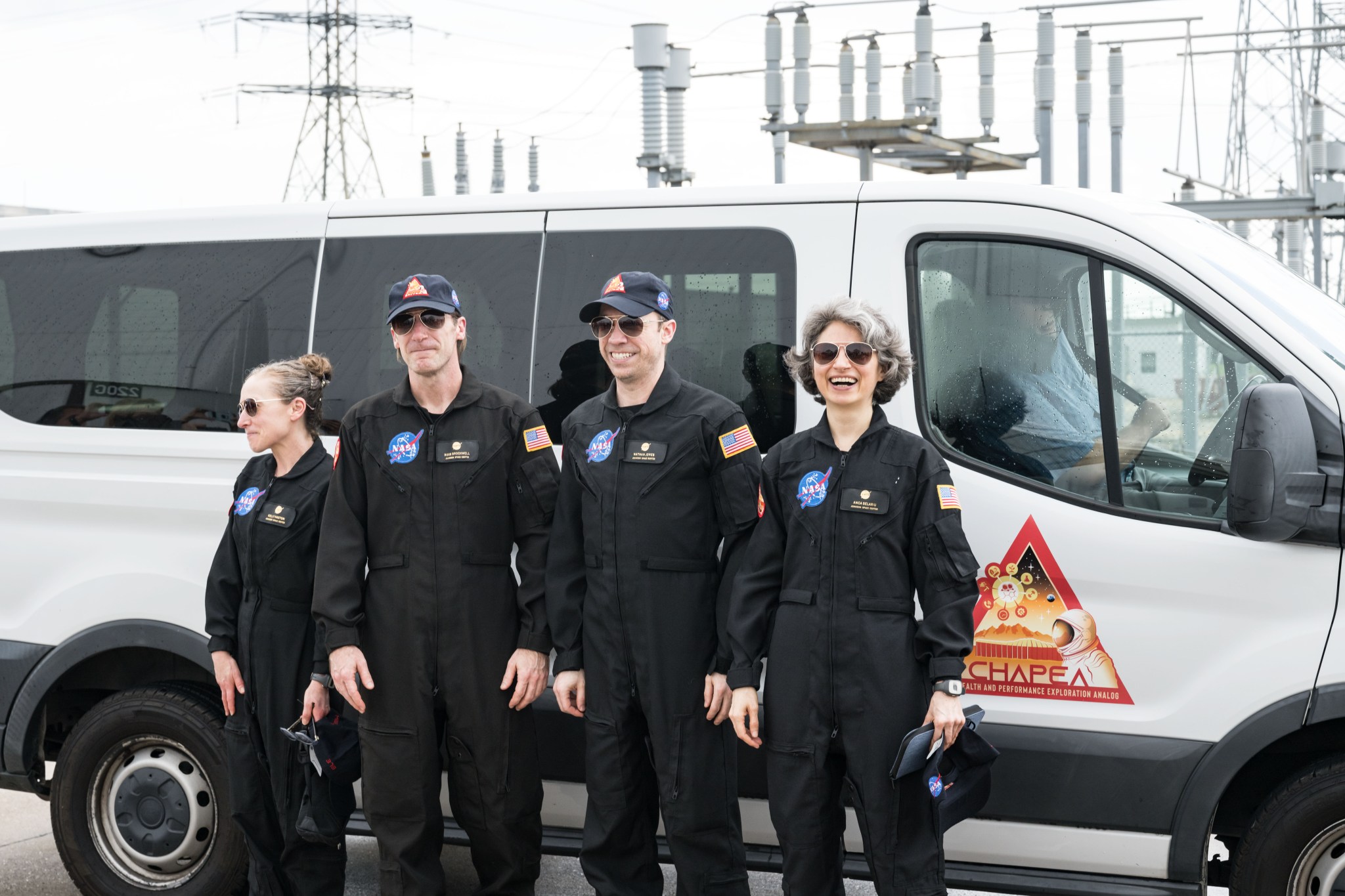When the first humans travel to the Red Planet, they will need to know how to repair and maintain equipment, grow their own food, and stay healthy, all while contending with Earth-to-Mars communication delays. They must also find ways to build comradery and have fun.
The first all-volunteer CHAPEA (Crew Health and Performance Exploration Analog) crew accomplished all of that and more during their 378-day analog mission on the surface of Mars.
Living in the isolated Mars Dune Alpha, a 3D-printed, 1,700-square-foot habitat, crew members Kelly Haston, Ross Brockwell, Nathan Jones, and Anca Selariu faced the rigors of a simulated Mars expedition, enduring stressors akin to those of a real mission to the Red Planet. They also celebrated holidays and birthdays, gave each other haircuts, and found moments of levity in isolation. Their journey will help scientists understand the challenges of deep space missions and offer invaluable insights into the resilience of the human spirit.

As the crew concluded their journey on July 6, NASA astronaut and Deputy Director of Flight Operations Kjell Lindgren opened the habitat door and welcomed them home.
"The crew and their families have committed a year of their lives in service to NASA, the country, and humanity's exploration of space. Thank you to for committing yourselves to research that will enable our future exploration of space," he said. "Your fingerprints are going to be an indelible part of those first footprints on Mars."
The CHAPEA crew brought their diverse backgrounds and experiences to the mission, collaborating with NASA's scientists and engineers to collect data that will provide insight into maintaining crew health and performance for future missions to Mars.

Kelly Haston: Mission Commander and Pioneering Scientist
Haston, the mission commander, is a research scientist who builds human disease models. She has spearheaded innovative stem cell-based projects, deriving multiple cell types for work in infertility, liver disease, and neurodegeneration. Her role was pivotal in maintaining crew morale and ensuring the success of daily operations.
She highlighted the importance of teamwork and adaptability in a mission with such high stakes.
"We had to rely on each other and our training to navigate the challenges we faced," she said. "Every day brought new obstacles, but also new opportunities for growth and learning."
Nathan Jones: Medical Officer and Expert Communicator
Jones, the crew medical officer, used his emergency and international medicine experience to tackle the unique challenges of the Mars mission. His expertise in problem-solving and effective communication in a time-sensitive and resource-limited environment was essential due to the approximately one-hour transmission delay. "Even something as simple as when to communicate is important," said Jones. The crew had to consider what observations were essential to report to each other or Mission Control to avoid overburdening the team or unnecessarily using the limited bandwidth to Earth.
"Everything we do in CHAPEA is touched by the heroes working on the ground at NASA," he said. "We couldn't ask for a better experience or better people to work with."
The experience evolved into a journey of personal growth for Jones. "I am constantly looking forward, planning for the future," he said. "I learned to take time to enjoy the current season and be patient for the coming ones."
He also discovered a new hobby: art. "I have even surprised myself with how well some of my sketches have turned out," he said.
Anca Selariu: Microbiologist and Innovative Thinker
Anca Selariu brought expertise as a microbiologist in the U.S. Navy, with a background in viral vaccine discovery, prion transmission, gene therapy development, and infectious disease research management.
Selariu expressed that she owes much to the Navy, including her involvement in CHAPEA, as it helped shape her both personally and professionally. "I hope to bring back a fresh perspective, along with a strong inclination to think differently about a problem, and test which questions are worth asking before we set out answering them," she said.
Reflecting on the mission, Selariu said, "Every day seemed to be a new revelation about something; about Earth, about art, about humans, about cultures, about the history of life in the universe - what little we know of it."
She added, "As much as I appreciate having information at my fingertips, I will miss the luxury of being unplugged in a world that now validates humans by their digital presence."
Ross Brockwell: Structural Engineer and Problem Solver
Brockwell, the mission's flight engineer, focused on infrastructure, building design, and organizational leadership. His structural engineering background influenced his approach to problem solving in the CHAPEA habitat.
"An engineering perspective leads you to build an understanding of how things will react and interact, anticipate possible failure points, and ensure redundancy and contingency planning," he said.
That mindset helped the crew develop creative solutions to mission challenges, such as using a 3D printer to design part adapters and tools and find ways to connect as a team. "Several things we wanted to do for fun required innovation, one being developing a bracket so we could safely and securely mount our mini-basketball hoop," he said.
He advises Artemis Generation members interested in contributing to future analog missions to think about systems engineering theory and learn to develop and integrate whole systems while solving individual challenges.
Brockwell believes the most important attributes for a CHAPEA crew member are imagination and a strong sense of wonder. "Of course, one needs to have patience, self-control, emotional regulation, and a sense of humor," he said. "I would also add perspective, which means understanding the importance of exploration missions on behalf of humankind and appreciating being part of something greater than oneself."

A Vision for the Future
As the first CHAPEA mission concludes, the data collected and experiences shared by the crew will pave the way for future explorations, bringing humanity one step closer to setting foot on Mars.
"One of the biggest things I have learned on this long-duration mission is that we should never underestimate the effects of small gains over time," said Jones. "Be willing to do the hard things now and it may make all the difference for the future."
Selariu emphasized the importance of interdisciplinary collaboration in upcoming space missions. "What everyone at CHAPEA seems to have in common is passion for space and drive to pursue it no matter the challenges, inconvenience, and personal sacrifices."
Brockwell looks forward to missions to the Red Planet becoming a reality. "It still fills me with awe and excitement to think that one day there will be people on the surface of other worlds, overcoming immense challenges and expanding the existence and awareness of life from Earth."






